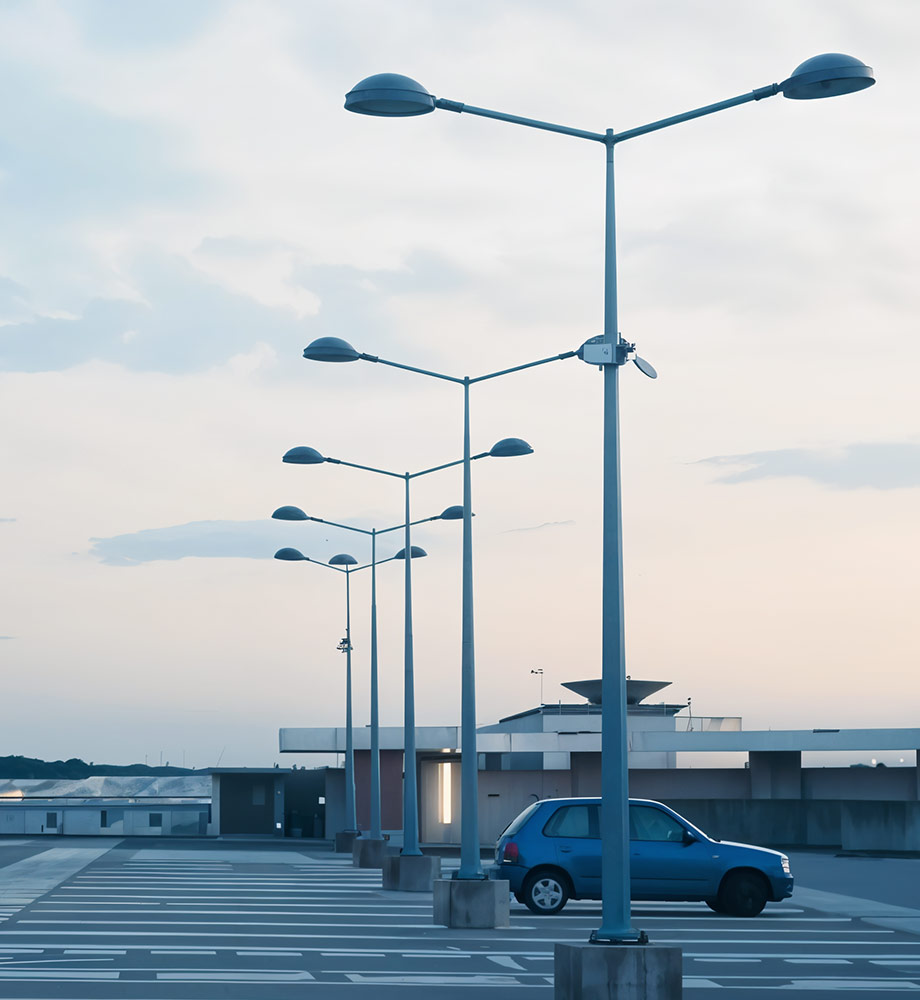Key Features
- Lightweight & High Strength: At roughly one-third the weight of steel and ¾ the density of wood, FRP poles can be handled and set more easily.
- Exceptional Durability: Outstanding resistance to corrosion, rot, UV rays, water, insects and woodpeckers.
- High Strength-to-Weight Ratio: Designed to meet or exceed required bending and compression strengths for power/lighting applications.
- Non-Conductive: Completely insulating to electricity; eliminates stray current issues and permits hiding internal ground wires.
- Thermally Stable: Low thermal conductivity minimizes heat sag; ideal for both extreme cold and hot climates.
- Fire-Resistant: With a coat of fire-retardant, FRP poles withstand exposure to fire (a plus in forested or brushy areas).
- Hollow Construction: Allows running coax, fiber or power cables internally, and protects ground conductors from theft and weather.
Benefits
- Long Service Life: Expected utility life of 70–100 years (wood poles typically last ~30–45 years).
- Minimal Maintenance: No chemical treatments needed; inspectors report virtually no degradation (no repainting or reinforcement).
- Pest-Resistant: Smooth FRP surface deters woodpeckers and climbers, reducing outages caused by animal damage.
- Lightening Installation: Reduced weight allows use of smaller cranes or even manual erecting in some cases, saving on installation costs.
- Safety & Theft Deterrence: Internalize all wiring (copper theft prevention) and eliminate external step-bolts (resist theft and vandalism).
- Environmentally Friendly: No hazardous scrap (FRP has no resale value) and no need to cut old-growth timber for poles.
Applications
- Electric Utility Lines: Distribution and transmission poles (replacing wood poles where corrosion or rot is an issue).
- Street & Area Lighting: Roadway, parking lot and outdoor venue light poles (corrosion-free coastal lighting).
- Telecommunications & Antennas: Tower poles for cellular, radio and broadband equipment (FRP poles can conceal antennas inside).
- Traffic Signals & Cameras: Signal head poles, CCTV/security camera poles (non-reflective, non-conductive properties).
- Signage & Flagpoles: Outdoor signs, banners and flagpoles where weather and UV resistance is needed.
- Marine & Offshore: Buoy and dock light poles in marine environments (salt and splash resistant).
- Recreation & Events: Temporary light poles for festivals or sports fields (easy transport and no rust).
Technical Specifications
- Material: Pultruded or filament-wound composite of glass fibers and thermosetting resin (usually polyester or vinylester).
- Pole Sizes: Diameters commonly 100–300 mm at base, tapering to top; lengths from ~3 m up to 20+ m for transmission poles.
- Cross-Section: Typically circular or polygonal; can be solid or hollow (with wall thickness ~6–15 mm).
- Mechanical Strength: Customizable to match wood pole classes; tensile and bending strength engineered per design.
- Electrical: Dielectric strength >15 kV/mm; fully insulative (no grounding required).
- Environmental Rating: UV-stabilized; some formulations offer UL94 V-0 fire classification.
Unique Selling Points (USPs)
- Proven Track Record: First used in the 1960s (Hawaii) where FRP poles lasted ~45 years in harsh coastal air; now globally accepted in utilities.
- Longevity: Industry studies show FRP poles can outlast wood and steel by decades (70+ year life).
- Non-Metallic Advantage: They do not corrode, and because they are hollow, allow concealed wiring (no exposed ground wires to steal).
- Rapid Deployment: FRP poles ship in one piece and can be set faster than concrete; their small footprint simplifies work in urban or congested sites.
- Complete Systems: We offer poles with pre-installed mounting plates, grounding braids, and factory-fitted light kits/antenna mount brackets.
- Maintenance-Free: No painting, treating or galvanizing – just install and forget. In practice, many FRP poles need only occasional inspection over their century-long lifespan.

